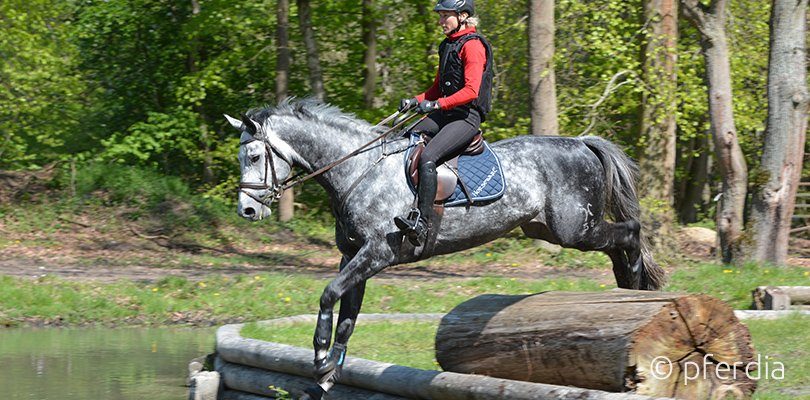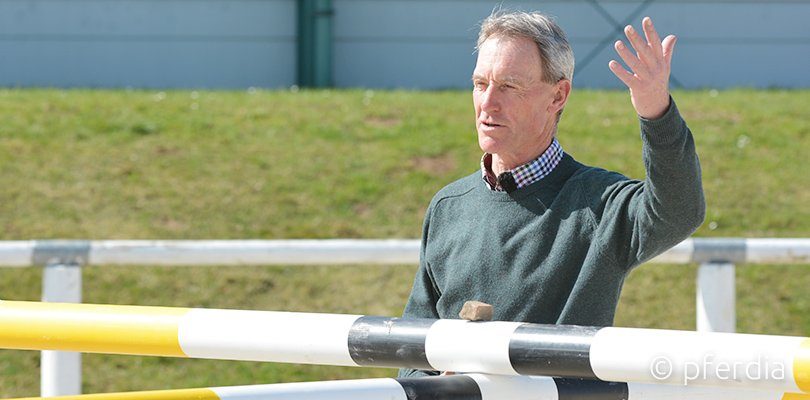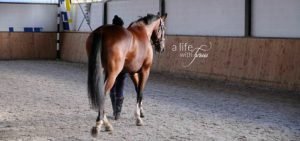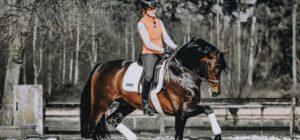Stay safe, no matter what! Eventing trainer Chris Bartle explains the right seat for difficult situations while riding and if you’re dealing with a bolting horse. You will also learn how to use your body to influence your horse most effectively and what you need to consider.
Table of Contents:
- The bolting horse: safety for all riders
- Characteristics of the “Oh shit!” position
- How to prevent a fall
- The different seat positions
- There is no perfect rider
The bolting horse: Safety is also important for recreational riders
In the Cross Country Training: The Safe Seat course, Chris Bartle analyzes the seat and its effects on professional riders. He reveals how they ride safely and how these riders skilfully lead their horses to jumps.
But, cross-country experience is not required: Any normal recreational rider will also benefit from Chris Bartle’s explanations! He presents the different seat variants for safe riding in general. He explains how the rider stays in the saddle safely when the horse slips or stumbles in difficult situations. The particular safety seat recommended by Chris Bartle has a funny name: he calls it the “Oh shit!” position. This also helps when a horse bucks.
Characteristics of the “Oh shit!” position
For this safety seat, the stirrups are buckled shorter for cross-country and jumping use. It is important that the rider takes the lower leg in such a way that the tip of the foot is in an imaginary line in front of the knee. As a result, the lower leg not only lies against the saddle girth but in some cases even in front of it. The rider should feel two-thirds of the horse in front of him, which means: The rider’s center of gravity should be behind the horse’s center of gravity. The rider’s buttocks take a seat in the saddle, and the rider’s upper body is even held slightly behind the vertical.

Bolting horse? How to prevent a fall
In this “Oh Shit!” position, the reins are allowed to slip out of your hand in an emergency. If the horse stumbles, it has the opportunity to use its neck as a balance bar. This allows it to catch itself and prevent a fall.
Chris Bartle shows an impressive example of this in the course: William Fox-Pitt (whom Chris Bartle describes as the most experienced eventing rider ever!) arrives inappropriately at a fixed obstacle. Even over the jump, he lets the reins slide out of his hands for a long time. He resets himself so he’s in the described “Oh shit!” position when the horse lands. Due to the unsuitable distance, the horse stumbles when landing. The viewer can immediately imagine that this could end in a fall, but the horse can catch itself because it can balance itself again via its neck, thanks to the rein slip. The rider doesn’t bother the horse much and sits securely because he has shifted his center of gravity to the back. William Fox-Pitt was able to avoid a fall and continued the ride.
Let the reins slip out of your hand
Incidentally, many video examples show how naturally and quickly the reins slip out of the hands of good riders and are picked up again just as quickly. Chris Bartle explicitly points out how important it is to practice this in training.

The different seat positions
Chris Bartle says an eventing rider needs “The heart of a lion and the seat of a pessimist!” In the course, he shows how good riders switch between the different seat positions – for example from the racing seat to the preparation seat, from the preparation seat to the contact seat. The well-established eventing trainer explains all of these seating variants and their properties in detail.
You can also learn in the course:
- the task of the rider’s core muscles
- how the rider uses their thighs
- why the levers in the rider’s body are essential
- how the rider channels the horse’s shoulders with their body
- why the rider must sit to allow the horse’s back to work freely
- how the rein bridge also fulfills important functions at the highest level of sport
- why it is important to keep the horse’s head, neck, and shoulders as straight as possible in front of you, and how to do this
- the advantages of dressage training
- why looking straight ahead is so important and how you can improve
- how young horses are introduced to water jumps
- how to distinguish between good and bad thigh positions in riders
There is no perfect rider
In all of Chris Bartle’s explanations, his knowledge is very likable and packed in a down-to-earth manner. You can feel that this man lives for and loves versatility without any arrogance, despite his many awards. One of his most beautiful statements in the lecture is the following: “There is no such thing as a perfect rider! We never stop learning!”
Are you interested in the course and want to stay safe in the saddle no matter what happens? Then take a look at our website and get helpful exercises and tips from selected trainers like Chris Bartle to perfect your seat.








